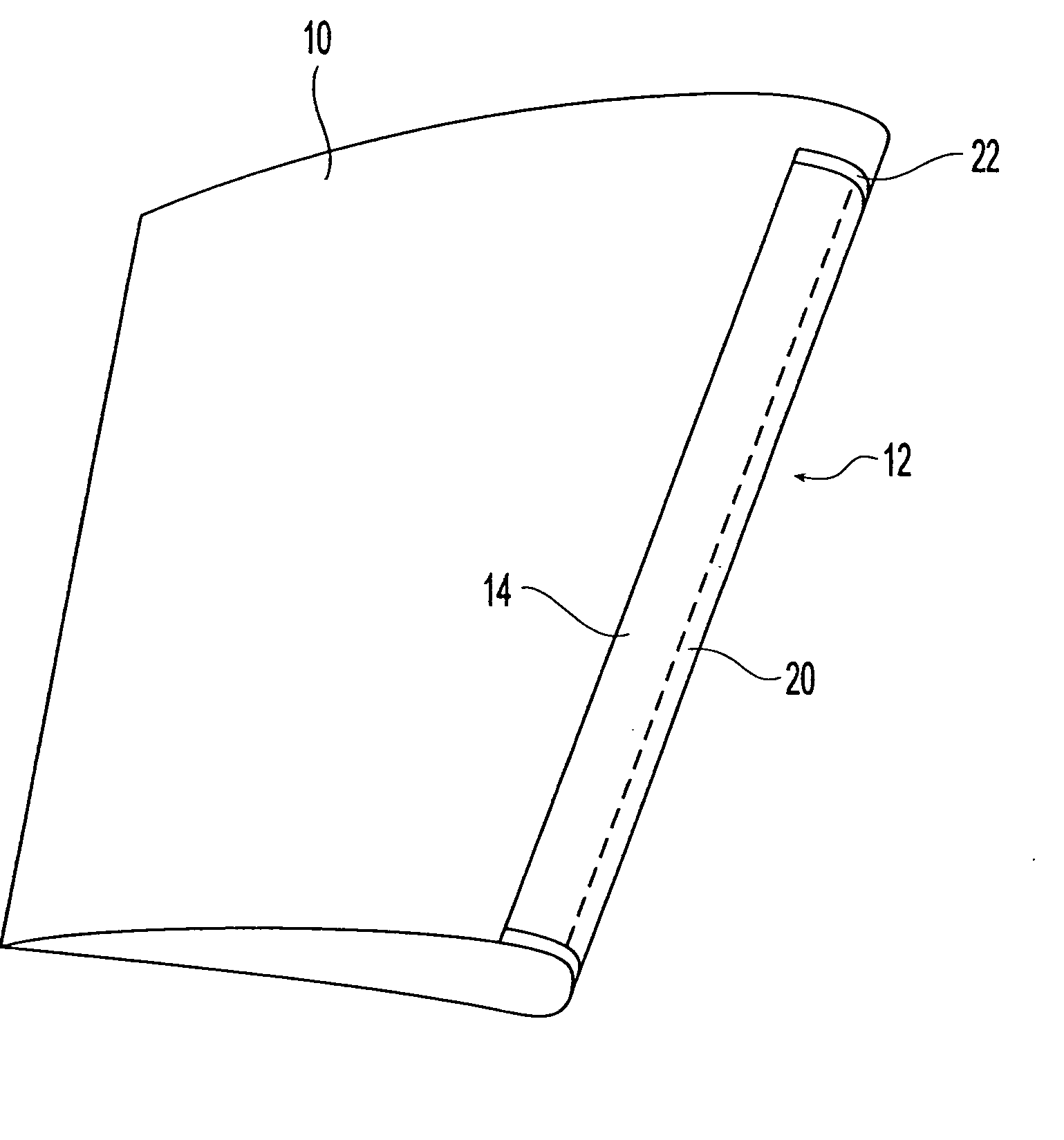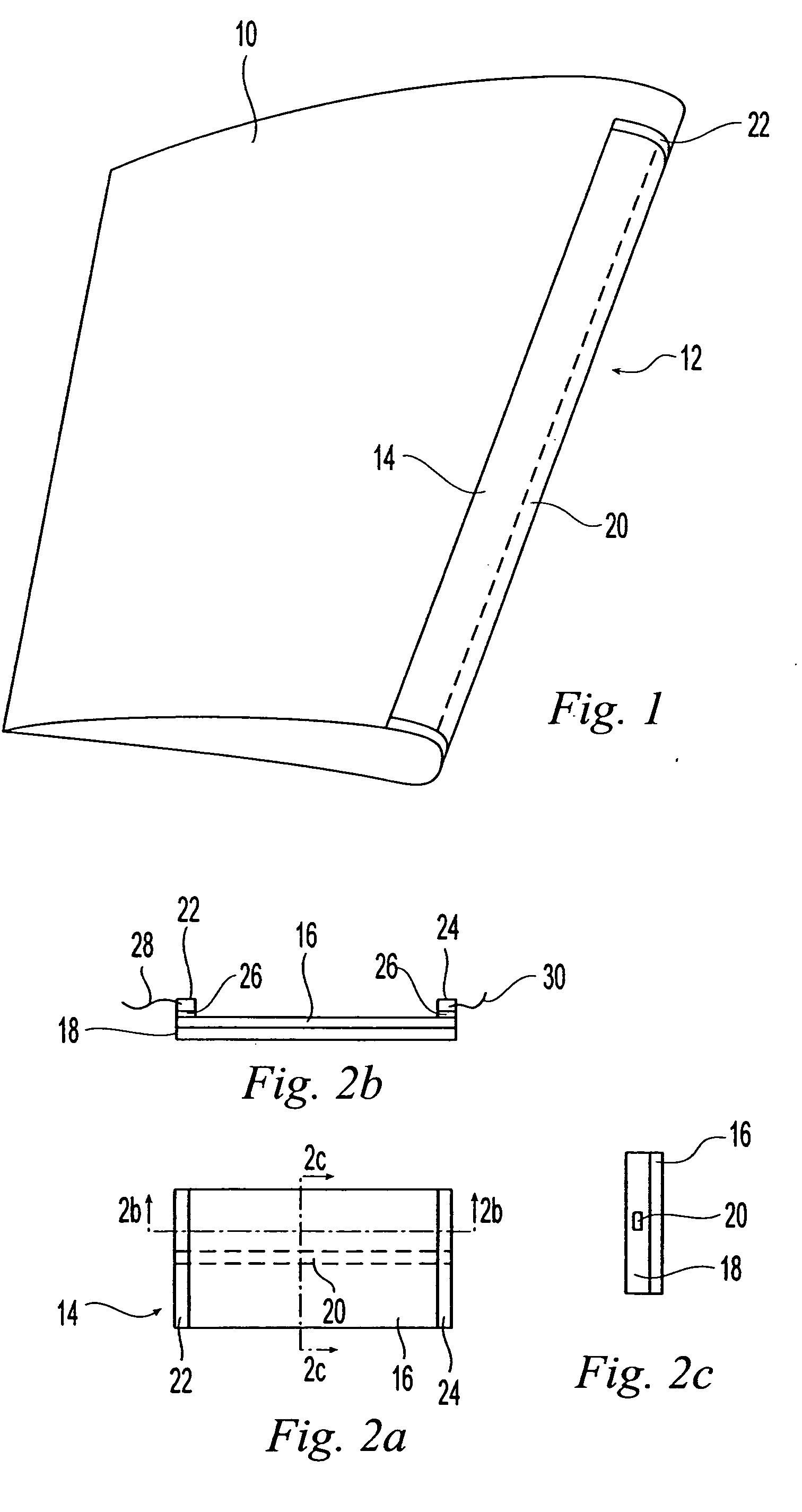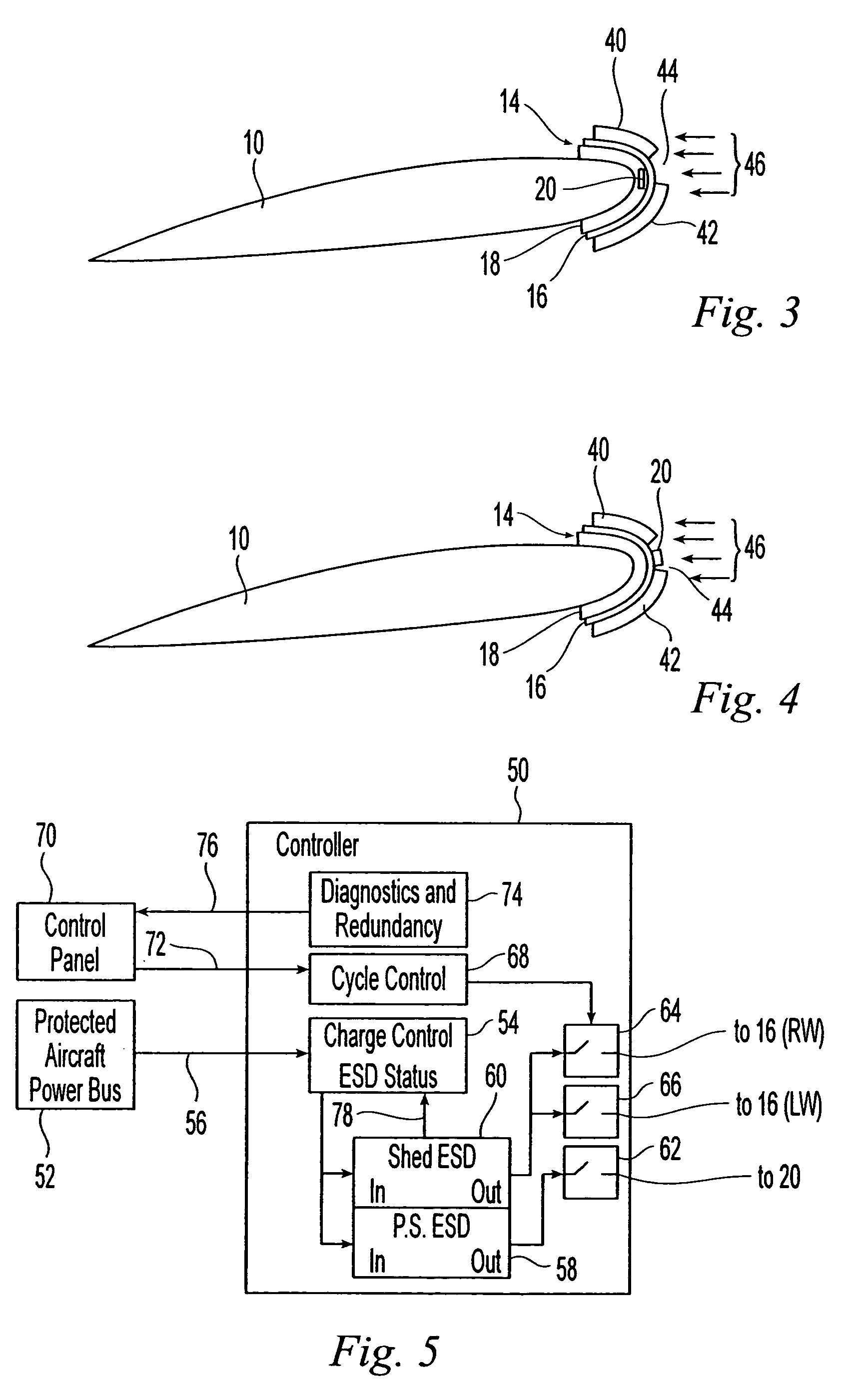Low power, pulsed, electro-thermal ice protection system
- Summary
- Abstract
- Description
- Claims
- Application Information
AI Technical Summary
Benefits of technology
Problems solved by technology
Method used
Image
Examples
Embodiment Construction
[0030]FIG. 1 is an isometric illustration of an airfoil section 10 of an aero structure suitable for embodying one aspect of the present invention. Referring to FIG. 1, wrapped around a leading edge 12 of the airfoil 10 in a C-shaped configuration is a metal foil heater 14. The metal material of foil heater 14 should be durable under and resistant to flight conditions of the airfoil 10, such as raindrop erosion and particulate abrasion, for example. In the present embodiment, the foil heater 14 comprises a rectangular sheet of Titanium having a thickness of approximately 0.004 inches or 4 mils with dimensions of approximately 66 inches in length and approximately 11 to 13 inches in width, for example.
[0031] An exemplary Titanium foil heater 14 suitable for embodying the principles of the present invention is shown in plan, side and profile views in FIGS. 2A, 2B and 2C, respectively. Referring to FIGS. 2A, 2B and 2C, a Titanium metal sheet or layer 16 is disposed over an insulating ...
PUM
 Login to View More
Login to View More Abstract
Description
Claims
Application Information
 Login to View More
Login to View More - R&D
- Intellectual Property
- Life Sciences
- Materials
- Tech Scout
- Unparalleled Data Quality
- Higher Quality Content
- 60% Fewer Hallucinations
Browse by: Latest US Patents, China's latest patents, Technical Efficacy Thesaurus, Application Domain, Technology Topic, Popular Technical Reports.
© 2025 PatSnap. All rights reserved.Legal|Privacy policy|Modern Slavery Act Transparency Statement|Sitemap|About US| Contact US: help@patsnap.com



